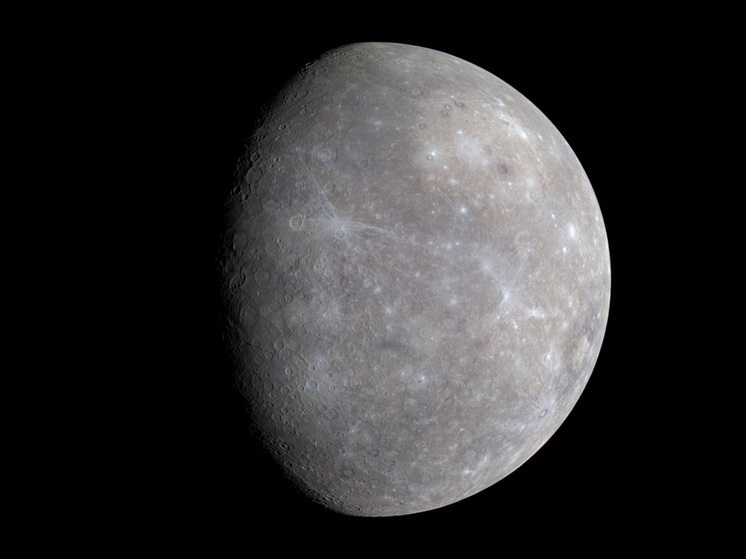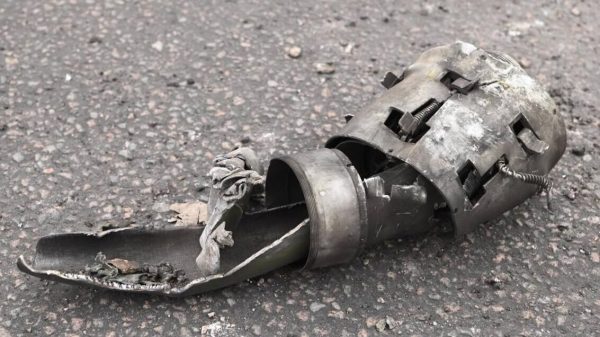Mining the gems would be a difficult task
According to a new study, Mercury, the smallest planet in the solar system and the closest to the Sun, may have a diamond layer up to 18 kilometers thick beneath its surface.

The diamonds may have formed shortly after Mercury itself transformed into a planet about 4.5 billion years ago from a swirling cloud of dust and gas in a high-pressure, high-temperature environment, CNN notes. At the time, the young planet is thought to have had a graphite crust floating above a deep ocean of magma.
The team of researchers recreated this fiery environment in an experiment using a machine called an anvil press, which is commonly used to study the behavior of materials under extreme pressure and to produce synthetic diamonds.
“This is a huge press that allows us to process tiny samples at the same high pressure and temperature that we would expect to find deep inside Mercury’s mantle, at the boundary between the mantle and the core,” said Bernard Charlier, head of the geology department at the University of Liege in Belgium and co-author of the study that presented the results.
The team placed a synthetic mixture of elements including silicon, titanium, magnesium and aluminum in a graphite capsule that mimics the theoretical composition of Mercury’s early interior. The researchers then subjected the capsule to pressures nearly 70,000 times greater than those found on Earth’s surface and temperatures up to 2,000 degrees Celsius (3,630 degrees Fahrenheit), likely matching the conditions near Mercury’s core billions of years ago.
After the sample melted, the scientists examined the changes in the chemistry and minerals under an electron microscope and noted that the graphite had turned into diamond crystals.
This mechanism, the researchers say, could not only tell us more about the secrets hidden beneath Mercury’s surface, but also about the planetary evolution and interiors of exoplanets with similar characteristics.
Mercury is the second-densest planet after Earth. Its large metallic core makes up 85 percent of Mercury’s radius, and it is also the least studied of the solar system’s terrestrial planets. NASA’s most recently completed Mercury mission, MESSENGER, flew by the planet from March 2011 to April 2015. Also known as the Mercury Surface, Space Environment, Geochemistry, and Ranging Mission, it collected data on the planet’s geology, chemistry, and magnetic field before the spacecraft ran out of fuel and impacted the surface.
“We know that Mercury has a lot of carbon on its surface in the form of graphite, but there are very few studies on the planet’s interior,” said Yanhao Lin, a staff scientist at the Center for Advanced Research on High-Pressure Science and Technology in Beijing and a co-author of the study, which appeared in June in the journal Nature Communications.
«Compared to the Moon or Mars, we know very little about Mercury, not least because we don't have any samples from the surface of the planet,» Charlier said. Mercury is different from all the other terrestrial planets, he added, because it is so close to the Sun and therefore contains very little oxygen, which affects its chemical composition.
One of MESSENGER's discoveries was that Mercury is rich in carbon, and its surface is grey due to the widespread presence of graphite, which is a form of carbon. Diamonds are also made of pure carbon, which forms under certain pressure and temperature conditions. The researchers wanted to find out if this process could have occurred during the planet's formation.
When Lin, Charlier and their colleagues designed an experiment to simulate Mercury's interior shortly after the planet's formation, one of the key elements was knowing that sulfur is also present on Mercury, as previous studies have shown. «We found that conditions are different here because Mercury has a lot of sulfur, which lowers the melting point of our sample,» Charlier notes.
“It melted completely at a lower temperature than in a sulfur-free system, which is good for the stability of the diamond, because diamond likes high pressure but lower temperature. And that’s basically what our experiments tell us: Mercury’s magma ocean is colder than expected, and also deeper, as we know from the new interpretation of the geophysical measurements,” he added, also citing the MESSENGER data.
According to the study, it’s these two factors that make diamond formation possible.
Charlier cautions that the diamond layer’s thickness, between 15 and 18 kilometers, is only an estimate and could change, since the diamond formation process is still ongoing as Mercury’s core continues to cool.
It is also impossible to say how big the individual diamonds might be. «We have no idea how big they are, but diamonds are made only of carbon, so their composition should be similar to what we know on Earth. They will look like pure diamonds,» he said.
Could diamonds ever be mined? Charlier said that would be impossible even with better future technology, as they are buried about 500 kilometres below the surface. “However, some of the lavas on Mercury’s surface were formed by melting very deep layers of the mantle. It is reasonable to assume that this process could bring some diamonds to the surface, similar to what happens on Earth,” he said.
Charlier explained that this diamond-forming process could happen on some of the exoplanets we find in our galaxy if they have a chemical makeup as low in oxygen as Mercury. “If an exoplanet were smaller than Mercury, the core-mantle boundary would be too shallow and the pressure would be too low to form diamonds,” he said. “But the size between Mercury and Earth, combined with the low oxygen content, creates favorable conditions for diamonds.”
Scientists may soon learn more. The BepiColombo mission, a twin spacecraft launched in October 2018, is expected to orbit Mercury in December 2025 after a series of flybys. Led by the European Space Agency and the Japan Aerospace Exploration Agency, the mission will study the planet from orbit and reveal much more about its interior and characteristics.
The collaboration is named after Italian scientist Giuseppe “Bepi” Colombo, who invented the “gravity assist” maneuver commonly used to send probes to other planets.
“BepiColombo may be able to identify and quantify the carbon content on the surface, and determine whether there is diamond or more graphite on the surface,” Charlier said. “This was not possible with MESSENGER, and the measurements will also be more precise, giving us more accurate estimates of the depth of the core-mantle boundary. We will be able to test our hypothesis again.”
Sean Solomon, principal investigator of NASA's MESSENGER mission to Mercury and a senior scientist at Columbia University in New York, said it was an «interesting idea» but would be a challenge for future Mercury missions to confirm. «Any such diamond layer is deep and relatively thin,» he said in an email. Solomon was not involved in the study.
“The most promising method is probably seismology, since seismic wave velocities in diamond are much higher than in mantle rocks or core material, but seismic measurements would require one or more long-lived landers on Mercury’s surface,” said Sean Solomon. Bepicolombo, the only mission currently planned to reach Mercury, originally had a lander, but it was cut due to budget constraints.
Felipe Gonzalez, a theoretical physicist in the Department of Earth and Planetary Sciences at the University of California, Berkeley, who was also not involved in the work, said the study represents an important step forward in our understanding of planetary interiors and how they form and evolve. He believes that interdisciplinary studies like this are key to solving the complex problems we face in science today.
The proposed mechanism by which this diamond layer forms is plausible, Gonzalez added, but it still depends heavily on our assumptions about Mercury’s interior structure. “While very strong constraints have been established over the years as we’ve learned more about this planet, we can only estimate its composition in our models and experiments based on indirect measurements,” he said by email.
“However, this study still represents the best we can do with what we have at this point,” Gonzalez said. “Only future missions to Mercury will tell us whether these predictions were correct. For now, we can focus on improving our understanding of materials in these extreme environments by running more and better simulations and experiments in our labs.”























































Свежие комментарии